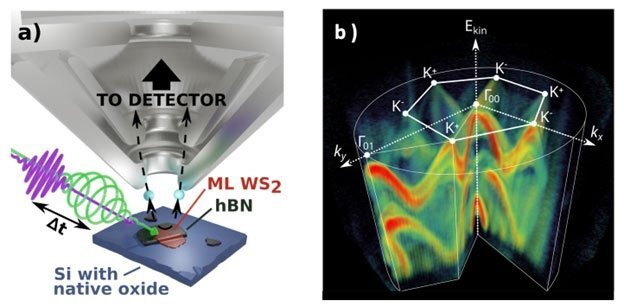Scientists have made a breakthrough in studying the unique exciton states found in two-dimensional tungsten disulfide (WS2) crystals. These excitons, which are composed of an electron and an electron hole, have short lifetimes and can rapidly transition between different states. By employing a new technique called time-resolved momentum microscopy, researchers have been able to track these transitions and observe how the coupling mechanisms between exciton states differ from current theories.
Transition metal dichalcogenides (TMDs), including WS2, have garnered significant interest due to their strong light absorption despite their extremely thin atomic structure. This property makes them promising for applications like nanoscale solar cells and electronic sensors. With the use of the momentum microscope, scientists can now examine other next-generation materials and devices to gain insights into their behavior.
Various light-induced exciton states can emerge in monolayer TMDs like WS2, depending on factors such as the wavelength or power of the exciting light and the crystal’s temperature. Circularly polarized light, where the electric field rotates around the direction of the light wave, can selectively generate excitons with specific spin configurations in particular energy bands.
A team at Stony Brook University has developed a specialized instrument capable of directly visualizing these effects under different ultrafast light excitation conditions. This instrument allows researchers to disentangle the complex mixture of quantum states that can arise.
The team’s findings, published in Physical Review Letters, demonstrate that the binding force between the electron and electron hole in excitons contributes to rapid coupling or mixing of different exciton states. Importantly, this mixing conserves both energy and momentum in the process. Surprisingly, the study revealed that the rate of exciton mixing does not rely on the exciton energies, contrary to previous predictions. While the results provide experimental support for existing theories of exciton coupling in TMDs, they also highlight certain discrepancies. Understanding the interplay between exciton states is crucial for harnessing the potential of TMDs in nanotechnology and quantum sensing.
Source: US Department of Energy
